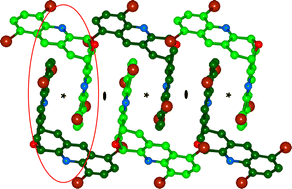An oxa-bridged tetrahalo aryl lattice inclusion host
Abstract
The oxygen-substituted diquinoline tetrabromide 11 has been synthesised and found to be a further example of the tetrahalo aryl inclusion host family. This host forms achiral molecular staircases by means of aromatic offset face–face (OFF) and centrosymmetric pi–


 Please wait while we load your content...
Please wait while we load your content...